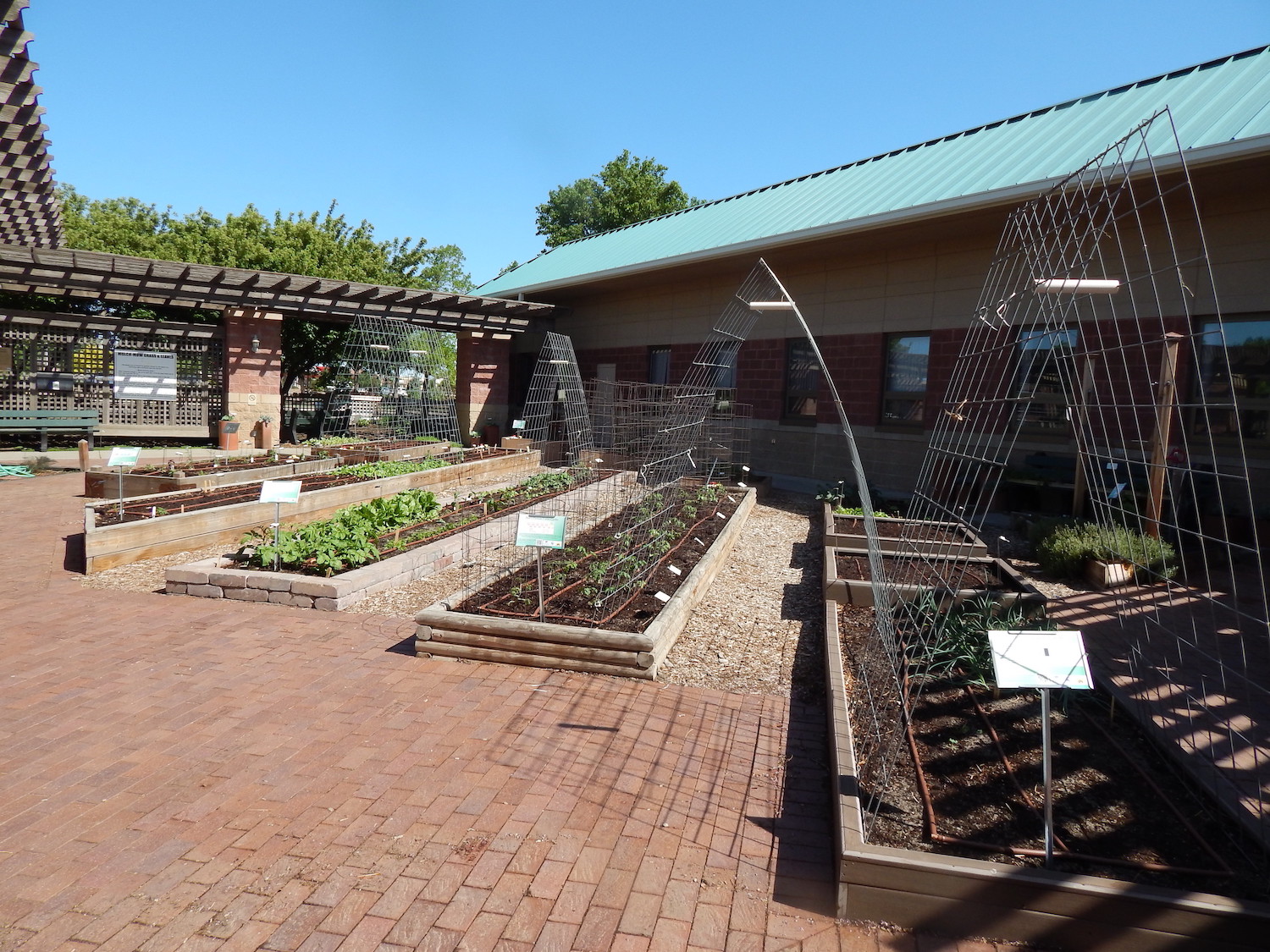City-dwelling gardeners like me often have limited space to grow all of the wonderful fruits and vegetables they would like. Over the years, I have experimented with different types of structures that provide a vertical element to the garden. Plants that tend to sprawl and take up a lot of space on the ground can be somewhat corralled and trained to grow on a support of some kind.
There are many types of trellises and tomato supports you can purchase but most are not sturdy enough to handle a plant that gets really big. For many years I have grown my tomatoes in cages that a friend made for me out of rebar. I stake the tall, round cage well into the ground with wood or metal stakes and attach the cage to the stakes with twine. These support huge tomato plants quite well. Only a few times was a Kansas windstorm able to blow them over.
The rebar cages are also great for growing cucumbers, especially the long skinny ones. They can grow perfectly straight without the yellowish area that happens when they lay on the ground.
Peppers do well in the small cages from the garden center. They don’t get very tall but some varieties seem to need a little support.
Pole beans also do well in tall tomato cages. I have also used teepees made of twigs and twine for pole beans, which work nice and look rustic in my wild and crazy garden!
The demonstration garden at the Sedgwick County Extension has experimented with growing frames made from cattle fencing for several years. They have grown tomatoes, squash, cucumbers, melons and other exotic crops very successfully.
The cattle fencing which is 16 feet long and 50 inches wide, can be cut in half, and tied together to form an a-frame with the long points of wire at the bottom. Use hog rings or strong cable ties at the top to tie the two pieces together. Poke the bottom wires into the soil forming the “A” shape. Use a piece of PVC with notches cut in the ends to stabilize the size of the A. This structure actually adds 48 square feet to your garden!
You can plant cool season crops under the A and the vining plants will provide some shade for them possibly extending their productivity into late spring.
Some plants need training to grow up on a structure. You can use twine, zipties or clips to connect the vines to the frame to get them started. It is also best to prune some of the side branching on plants like tomatoes so that they grow up rather than all directions.
Winter squash, cucumbers and most melons can grow without individual support on the frames but if you are worried about a melon falling off the stem before it is ripe, you can slip the melon into a pair of panty hose while it is small and tie it to the frame.
Along with adding space to your garden, vertical gardening is also good for your plants. The plants are stretched out so they get more sun exposure and in periods of heavy rain and humidity, the increased airflow will help prevent rotting and disease.
Give vertical gardening a try. I am sure you will enjoy the results.
Janice Sroufe is a Sedgwick County Master Gardener. She welcomes comments and questions. Contact her at
janice.sro@gmail.com









